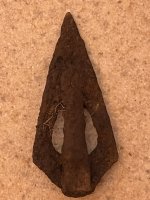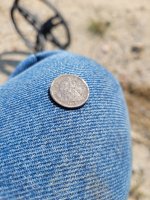jameskaufmann
Jr. Member
- Jan 30, 2010
- 41
- 9
- Detector(s) used
- teknetics omega 8000 fisher f75
- Primary Interest:
- All Treasure Hunting
why does the detector say it's a coiin?
when the screen and sound says coin, does the detector id the target by metal content or round shape? washer,bottle cap, ect. or both. i can't seem to find the answer. thank's.
when the screen and sound says coin, does the detector id the target by metal content or round shape? washer,bottle cap, ect. or both. i can't seem to find the answer. thank's.
Amazon Forum Fav 👍
Upvote
0







